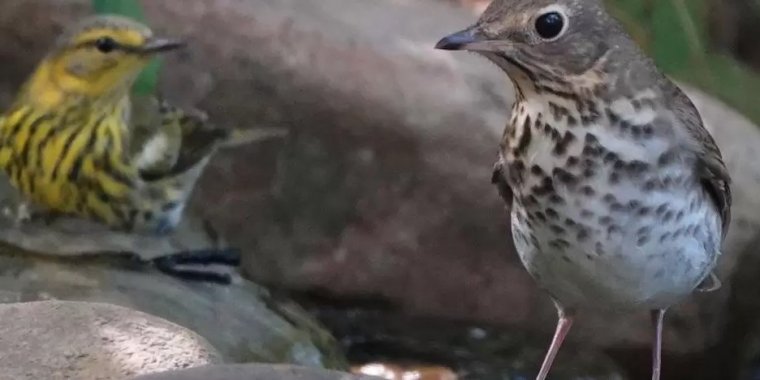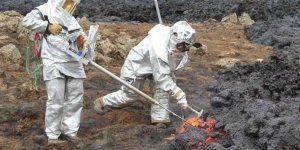| Science |
Studying the journey, not the destination, provides new insight into songbird migrations
New research using two decades worth of data could change how scientists think about bird migrations and the interdependencies and relationships they involve.

A Cape May Warbler and a Swainson's Thrush at a birdbath. Photo: Richard Hall/University of Georgia
Driving any long distance usually includes at least one rest stop, such as for food or gas. Imagine that each time you stop during a trip you run into the same group of other cars and people travelling along the highway, perhaps with a different destination. You might eventually strike up a conversation.
Now imagine that this happened year in and year out until you became friendly with the other travelers.
Researchers from the University of Maryland Center for Environmental Science (UMCES) found that a similar set of meaningful social relationships exists between species of songbirds that use the same stopover points during their respective migrations.
Migrating songbirds not only choose stopovers based on the availability of preferred food and habitat, but also seem to opt for places their "friends" make stops at.
While the interactions between species at these stopovers could result in disease spread, competition or other negative outcomes, the researchers find that the relationships are largely positive.
"Learning that migrating birds are characterized by persistent, non-random assemblages of interacting species opens the door to myriad questions at the intersection between networks, migration" and the environment," said Steve Dudgeon, a program director in NSF's Directorate for Biological Sciences, which funded the work.
"Further research can help answer whether successful migrations depend on these networks, if some relationships are more important than others to migration and whether key links in these networks are more vulnerable to environmental changes en route." (U.S. National Science Foundation)
YOU MAY ALSO LIKE





